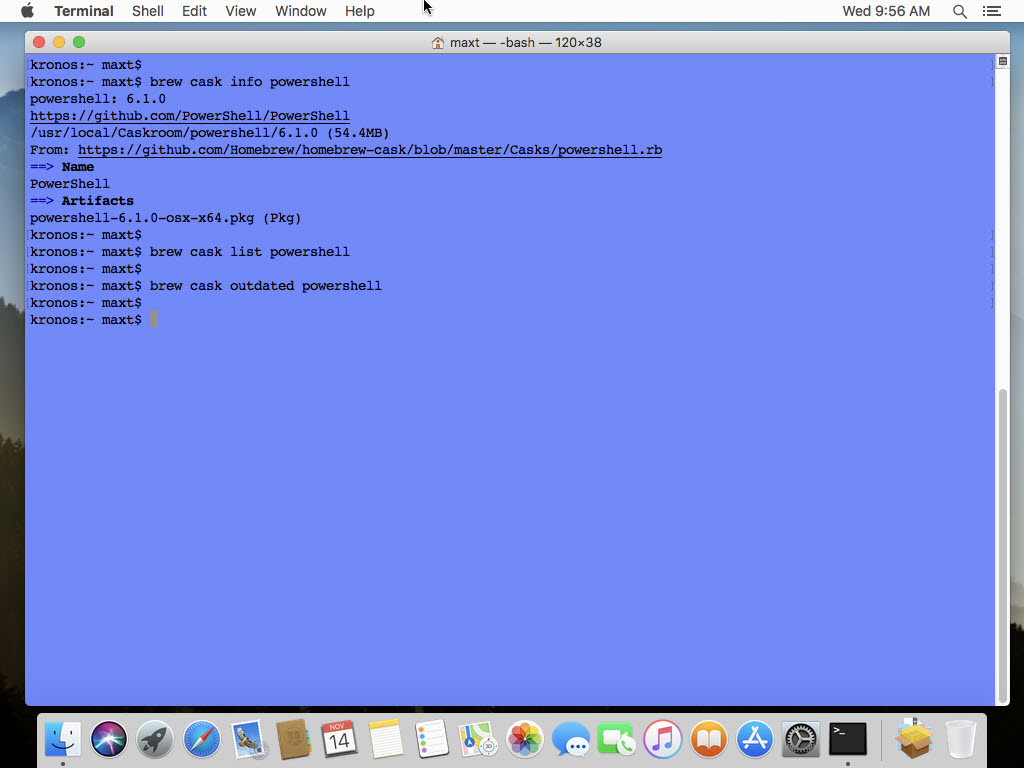
Line 6 for the name of the Partition for the dataset.Line 5 for the name of the Table you created.Line 4 for the name of your Storage Account.Line 3 for the Resource Groups your Storage Account is located in.Each row must also be using the same Primary Key view raw Get Network Interface Card Vendors.ps1 hosted by GitHub. The maximum number of rows allowed in a batch is 100. The quickest method is to batch the inserts. With the dataset in memory, we can parse it and insert each row into the table.
#Azure powershell for mac update#
Update Line 3 for where you want to output the file too. This will provide ~26k entries and is a good test for loading into Azure Table Service. The following script will obtain the Vendors list from here and save to your local disk. Rather than exporting to XML I will load it into Azure Table Storage.
#Azure powershell for mac for mac#
The example data I will use here is the dataset from a post last year for MAC Address Vendors lookup. Using the Azure Storage Explorer I created a Table named NICVendors. Whilst you can also create the Table via the PowerShell AzureRM Module or the Azure CLI, it is also super quick and easy using the Azure Storage Explorer which will be used later to verify the loaded dataset. Expand the Storage Account, select Tables and right-click and select Create Table. Using the Azure Storage Explorer, authenticate to Azure and navigate to your Storage Account. PowerShell 5.1 or later and the AzureRM PowerShell Module.


Some trial and effort later I got it to do want I needed and then using the Azure Table Service REST API I was able to easily query the dataset. Naturally, I needed to use PowerShell to perform this and I quickly found out that the AzureRM PowerShell Module could do the basics, but it wasn’t going to scale to the size of the datasets I had. I had previously used Azure Blob Storage but hadn’t done too much with Azure Table Storage. As part of both a side project and a work project I recently had a couple of larger datasets that I needed to put into a database and be able to search them.


 0 kommentar(er)
0 kommentar(er)
